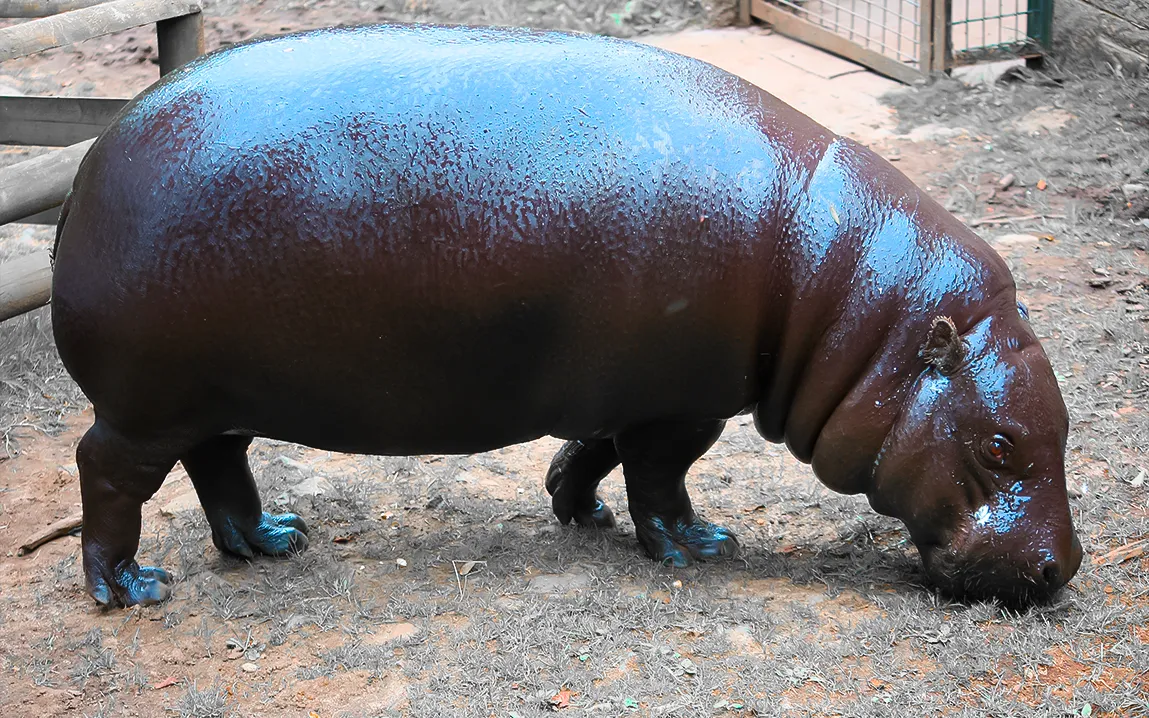This study was a notable success in the field of paleontology, where the skull of the subfossil dwarf hippopotamus that lived on Crete was reconstructed. The finding by researchers Nikolaos Gerakakis and Professor Dimitrios Makris not only offers an insight into the importance of the extinct species in scientific terms but also provides a glimpse of the prehistoric ecosystems on the island.
The ancient hippopotamus, Hippopotamus creutzburgi, or the Cretan dwarf hippopotamus, some part of the Pleistocene epoch, is said to range from roughly 2.6 million to 11,700 years ago. This small species of hippo represents one of the bigger island trends: insular dwarfism, in which large animals become small by adaptation to smaller environments and have therefore become significantly smaller than their mainland counterparts. For example, the Cretan hippo weighed only about 400 kg, or 880 lbs; modern hippos can reach weights of almost 4,500 kg.
Using the latest 3D digital imaging techniques, this team of scientists was able to digitally reconstruct the skull of this long-extinct creature from fragments found on Crete. While this is not the first such find on the island, it is one of the most complete and detailed to date, yielding new insights into the species’ biology, evolution, and role within the island’s ecosystem. The skull, when painstakingly reconstructed, has clear morphological differences from its larger relatives, setting the Cretan dwarf hippo apart from its relatives; the study shines light on how these creatures could have lived and interacted with other species on the island.
Crete is known for its Minoan civilization and rich biodiversity. Over the years, it has also been a center for several important fossil discoveries. Indeed, paleontologists have discovered signs of various types of dwarf megafauna that inhabited the island, including dwarf elephants and other animals that are now extinct. Such findings hint at an environment in which large species adapted to the isolated conditions on the island, evolving over thousands of years into smaller versions of themselves. The reconstructed skull of the dwarf hippopotamus gives scientists valuable data for understanding these particular evolutionary processes, especially those concerning island ecosystems.
The new research on the Cretan hippo provides a number of novel insights. For example, the skull’s analysis suggests how the species’ general body may have been adapted for an essentially aquatic lifestyle, like that of modern hippos, despite the relative shortage of fresh water on the island. This is a significant finding, since it goes against earlier supposition about the Cretan dwarf hippo’s behavioral and habitat preferences.
One of the more interesting things about this reconstruction, however, is the glimpse it gives into the place of the extinct species within the island’s greater ecological system. From the skull and comparisons with other prehistoric fossils, researchers can make some educated guesses as to how the hippo would have interacted with other species of the time. The Cretan hippos could have lived in the rivers and lakes of the island, together with other peculiar fauna that shared the same island space, which was tending to shrink. Similar to many of the dwarf species on the island, these hippos would have faced many challenges in terms of food and resources, which likely shaped their size and behavior.
Apart from this, the ongoing study of the ancient wildlife of the island has opened the door for further exploration. More discoveries of fossils, including that of the Cretan hippo and other extinct animals, are foreseen as the team continues its investigation into paleontological sites in Crete. These findings are especially valuable to scientists because, besides providing certain information about a period in natural history, they help in the general understanding of the process of extinction and of how small, isolated populations evolve over time.
Such rebuilding of the ancient Cretan hippo skull represents a trend going on now in science of using technology to bring these prehistoric creatures to life and, in that form, carry out their investigation, where it is utterly impossible with physical means only. This 3-D imaging and digital restoration provides such a level of precision and detail unavailable so far to physical reconstitution. This enables researchers to investigate even the minute details of the hippo skull, from the structure of the teeth to the shape of the nasal passages, for a better and clearer understanding of the hippo’s way of life and its biology.
The find is significant not only to paleontologists but also in the general perception that the scientific community and public have of the prehistoric world. It adds another piece to the jigsaw of how animals adapted to their environments millions of years ago and how isolated ecosystems, like those found on islands, often produce unique outcomes in evolution. The study of extinct species, like the Cretan hippo, has an important value for the understanding of the processes that lead to the extinction of one species and the survival of another.
Going forward, continued research into the fossilized creatures of Crete will continue to reveal an even more detailed picture of the island’s ancient ecosystems. Researchers are hopeful that these continuing excavations will help uncover new species and further refine our understanding of how ancient animals lived, interacted, and adapted in a world very different from our own. The Cretan dwarf hippo, now revived by modern technology, once more serves as a testament to how powerful paleontological research can be in bridging the gap between past and present.
The more discoveries that come to light on Crete, the more this small island continues to yield a wealth of information about the ancient world, offering a snapshot of a time when large mammals roamed an isolated Mediterranean landscape. For now, the reconstructed skull of the Cretan hippo stands as a symbol of the mysteries that lie below the soil of Crete.



